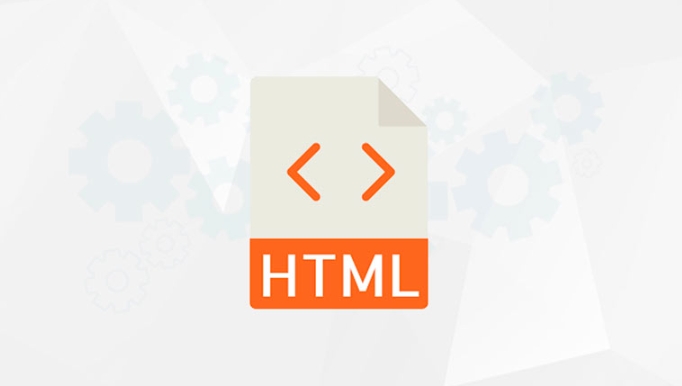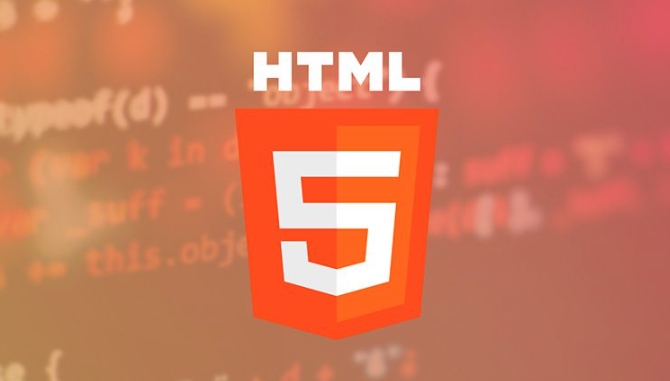The HTML DOM is a programming interface that represents an HTML document as a tree-like structure, enabling JavaScript to interact with and manipulate web pages. When a browser loads HTML, it parses the code into a DOM tree where each element becomes a node, and nested elements form parent-child relationships. The DOM reflects the current state of the page, including dynamic changes made by scripts. Developers use methods like document.getElementById() or document.querySelector() to access elements and modify content or styles dynamically. They can also respond to user actions using event listeners like element.addEventListener(). These capabilities allow real-time updates without reloading the page, making websites interactive and responsive.

The HTML DOM (Document Object Model) is basically a programming interface for web pages. It represents the structure of an HTML document in a way that programs — usually JavaScript — can interact with and manipulate the page. Think of it as a tree-like map of every element on the page, where each part (like paragraphs, headings, buttons) is a node you can access and change.

How the DOM Turns HTML into a Structure
When a browser loads an HTML file, it parses the code and builds a tree-shaped model of all the elements — this is the DOM. Each HTML tag becomes a node, and nested tags become child nodes. For example, if your HTML has a <div> containing a <code><p></p> tag, the DOM will show that <div> as a parent node and <code><p></p> as its child. This hierarchical setup makes it easy to locate and target specific parts of the page using JavaScript.
One thing to note: the DOM isn’t exactly the same as your HTML source code. It reflects the current state of the page, including any changes made by scripts or user interactions. So if JavaScript adds a new paragraph or removes a button, the DOM updates automatically to match.
Why the DOM Matters for Web Development
The DOM gives developers the power to dynamically update a webpage without reloading it. With JavaScript, you can do things like:

- Change the text inside an element
- Update styles (like color or size) based on user actions
- Add or remove elements from the page
- Respond to events like clicks, form submissions, or key presses
This interactivity is what makes modern websites feel responsive and app-like. Without DOM manipulation, every change would require reloading the entire page — which would be slow and frustrating for users.
How to Access and Modify the DOM
JavaScript uses built-in methods to find and work with DOM elements. Some common ones include:
-
document.getElementById()– finds an element by its ID -
document.querySelector()– finds the first matching element using CSS-style selectors -
element.addEventListener()– lets you respond to user actions like clicks or typing
Once you’ve selected an element, you can change its content with properties like .textContent or .innerHTML, or adjust its style directly using .style.
For example, if you want to change the text of a heading with ID title, you could write:
document.getElementById('title').textContent = 'New Heading';And just like that, the change appears on the page instantly.
That’s the basic idea behind the DOM — it's the bridge between HTML and interactive behavior via JavaScript. Not magic, just structured access and smart updates.
The above is the detailed content of What is the HTML DOM (Document Object Model)?. For more information, please follow other related articles on the PHP Chinese website!

Hot AI Tools

Undress AI Tool
Undress images for free

Undresser.AI Undress
AI-powered app for creating realistic nude photos

AI Clothes Remover
Online AI tool for removing clothes from photos.

Clothoff.io
AI clothes remover

Video Face Swap
Swap faces in any video effortlessly with our completely free AI face swap tool!

Hot Article

Hot Tools

Notepad++7.3.1
Easy-to-use and free code editor

SublimeText3 Chinese version
Chinese version, very easy to use

Zend Studio 13.0.1
Powerful PHP integrated development environment

Dreamweaver CS6
Visual web development tools

SublimeText3 Mac version
God-level code editing software (SublimeText3)

Hot Topics
 How do I stay up-to-date with the latest HTML standards and best practices?
Jun 20, 2025 am 08:33 AM
How do I stay up-to-date with the latest HTML standards and best practices?
Jun 20, 2025 am 08:33 AM
The key to keep up with HTML standards and best practices is to do it intentionally rather than follow it blindly. First, follow the summary or update logs of official sources such as WHATWG and W3C, understand new tags (such as) and attributes, and use them as references to solve difficult problems; second, subscribe to trusted web development newsletters and blogs, spend 10-15 minutes a week to browse updates, focus on actual use cases rather than just collecting articles; second, use developer tools and linters such as HTMLHint to optimize the code structure through instant feedback; finally, interact with the developer community, share experiences and learn other people's practical skills, so as to continuously improve HTML skills.
 How do I use the element to represent the main content of a document?
Jun 19, 2025 pm 11:09 PM
How do I use the element to represent the main content of a document?
Jun 19, 2025 pm 11:09 PM
The reason for using tags is to improve the semantic structure and accessibility of web pages, make it easier for screen readers and search engines to understand page content, and allow users to quickly jump to core content. Here are the key points: 1. Each page should contain only one element; 2. It should not include content that is repeated across pages (such as sidebars or footers); 3. It can be used in conjunction with ARIA properties to enhance accessibility. Usually located after and before, it is used to wrap unique page content, such as articles, forms or product details, and should be avoided in, or in; to improve accessibility, aria-labeledby or aria-label can be used to clearly identify parts.
 How do I create a basic HTML document?
Jun 19, 2025 pm 11:01 PM
How do I create a basic HTML document?
Jun 19, 2025 pm 11:01 PM
To create a basic HTML document, you first need to understand its basic structure and write code in a standard format. 1. Use the declaration document type at the beginning; 2. Use the tag to wrap the entire content; 3. Include and two main parts in it, which are used to store metadata such as titles, style sheet links, etc., and include user-visible content such as titles, paragraphs, pictures and links; 4. Save the file in .html format and open the viewing effect in the browser; 5. Then you can gradually add more elements to enrich the page content. Follow these steps to quickly build a basic web page.
 How do I create checkboxes in HTML using the element?
Jun 19, 2025 pm 11:41 PM
How do I create checkboxes in HTML using the element?
Jun 19, 2025 pm 11:41 PM
To create an HTML checkbox, use the type attribute to set the element of the checkbox. 1. The basic structure includes id, name and label tags to ensure that clicking text can switch options; 2. Multiple related check boxes should use the same name but different values, and wrap them with fieldset to improve accessibility; 3. Hide native controls when customizing styles and use CSS to design alternative elements while maintaining the complete functions; 4. Ensure availability, pair labels, support keyboard navigation, and avoid relying on only visual prompts. The above steps can help developers correctly implement checkbox components that have both functional and aesthetics.
 How do I minimize the size of HTML files?
Jun 24, 2025 am 12:53 AM
How do I minimize the size of HTML files?
Jun 24, 2025 am 12:53 AM
To reduce the size of HTML files, you need to clean up redundant code, compress content, and optimize structure. 1. Delete unused tags, comments and extra blanks to reduce volume; 2. Move inline CSS and JavaScript to external files and merge multiple scripts or style blocks; 3. Simplify label syntax without affecting parsing, such as omitting optional closed tags or using short attributes; 4. After cleaning, enable server-side compression technologies such as Gzip or Brotli to further reduce the transmission volume. These steps can significantly improve page loading performance without sacrificing functionality.
 How has HTML evolved over time, and what are the key milestones in its history?
Jun 24, 2025 am 12:54 AM
How has HTML evolved over time, and what are the key milestones in its history?
Jun 24, 2025 am 12:54 AM
HTMLhasevolvedsignificantlysinceitscreationtomeetthegrowingdemandsofwebdevelopersandusers.Initiallyasimplemarkuplanguageforsharingdocuments,ithasundergonemajorupdates,includingHTML2.0,whichintroducedforms;HTML3.x,whichaddedvisualenhancementsandlayout
 How do I use the element to represent the footer of a document or section?
Jun 25, 2025 am 12:57 AM
How do I use the element to represent the footer of a document or section?
Jun 25, 2025 am 12:57 AM
It is a semantic tag used in HTML5 to define the bottom of the page or content block, usually including copyright information, contact information or navigation links; it can be placed at the bottom of the page or nested in, etc. tags as the end of the block; when using it, you should pay attention to avoid repeated abuse and irrelevant content.
 How do I embed video in HTML using the element?
Jun 20, 2025 am 10:09 AM
How do I embed video in HTML using the element?
Jun 20, 2025 am 10:09 AM
To embed videos in HTML, use tags and specify the video source and attributes. 1. Use src attributes or elements to define the video path and format; 2. Add basic attributes such as controls, width, height; 3. To be compatible with different browsers, you can list MP4, WebM, Ogg and other formats; 4. Use controls, autoplay, muted, loop, preload and other attributes to control the playback behavior; 5. Use CSS to realize responsive layout to ensure that it is adapted to different screens. Correct combination of structure and attributes can ensure good display and functional support of the video.






